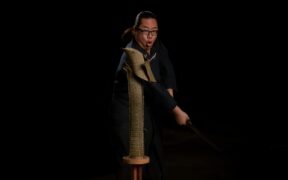Our content features commercial links to our products, committed to transparent, unbiased, and informed editorial recommendations. Learn More
Learning the History of Seppuku: A Samurai’s Philosophy of Ritual Suicide
NO AI USED This Article has been written and edited by our team with no help of the AI
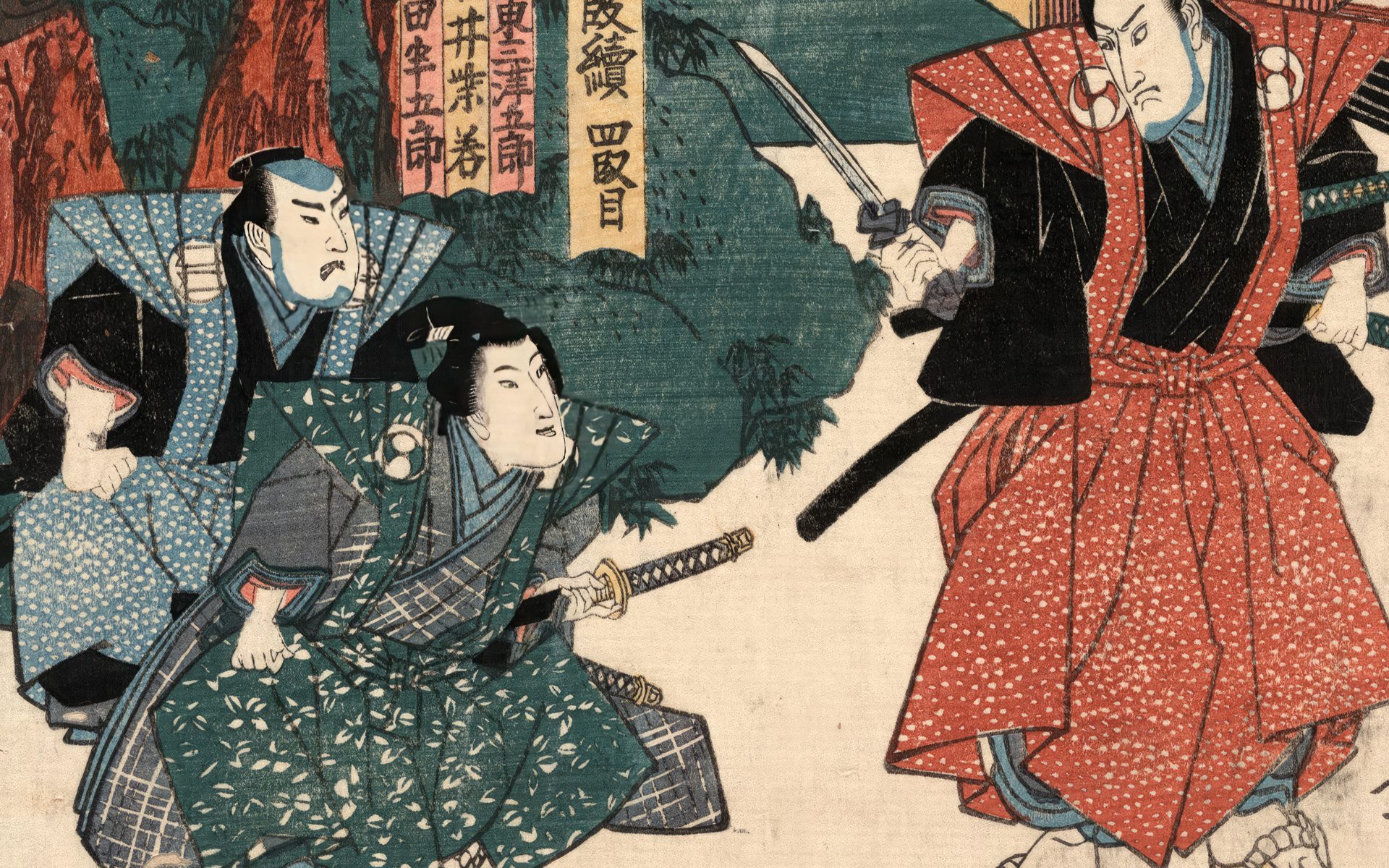
Seppuku, or as it’s also known, hara-kiri, is a famous part of Japanese history. It’s a traditional way of committing suicide that was seen as honorable.
This practice started in medieval Japan and continued until modern times. It was especially common among warriors or their families who wanted to regain their honor after experiencing shame or defeat.
The method of seppuku became very detailed during the Edo period, from 1600 to 1867. Usually, it involved the person using a short sword to open their own stomach. This act is specifically what hara-kiri refers to, which means “belly-cutting.”
In many cases, a trusted friend would then quickly end the person’s suffering by cutting off their head. Both parts, the belly-cutting and the beheading, make up the ritual of seppuku.
The Early History of Seppuku
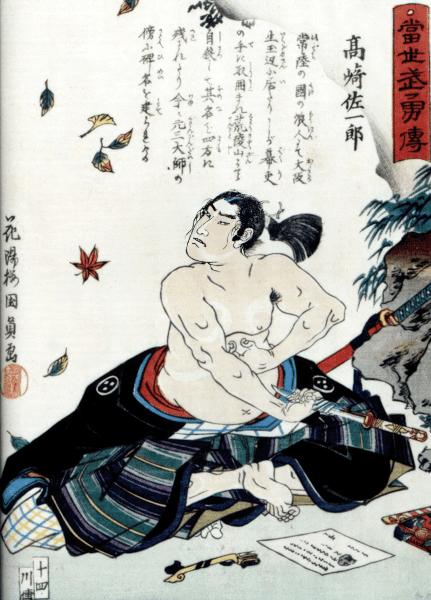
Hara-kiri is first mentioned in Japanese literature in 713 in the record of the legend of Harasaki or ‘belly-slashing’ marsh. The legend tells of the goddess Aomi who, in bitter fury after losing her husband, slashed her belly with a sword and drowned herself in the marsh waters.
This harrowing tale shows that the link between suicidal fury and stomach-cutting had taken root in the sixth or seventh century. This is well over four hundred years before the first historical record of hara-kiri.
By the 12th century, hara-kiri became linked with samurai warriors.
For example, in 1170, a samurai named Minamoto no Tametomo killed himself after his rebellion failed. Before dying, he shot an arrow that sank a ship full of enemies and then cut open his belly. This act was seen as heroic and reflected the fierce nature of early samurai.
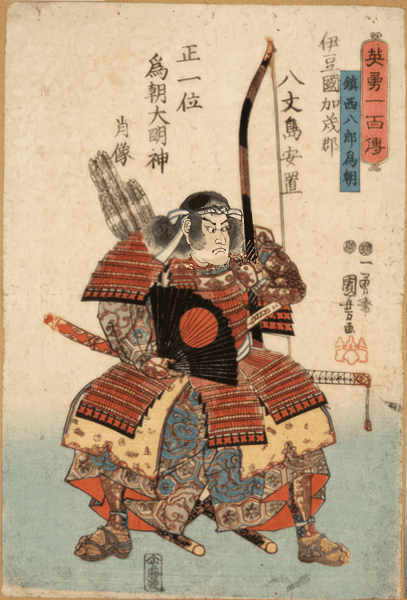
Early samurai viewed hara-kiri as a way to express rage or regain honor, often choosing to suffer through the pain rather than being killed quickly by an enemy.
They would make a cross-shaped cut in their belly. This practice shows how hara-kiri evolved from a desperate act of fury to a more formal way of restoring honor among samurai.
Seppuku During the 1500s: The Development of Honorable Death
In the 1500s, the practice of seppuku, or ritual suicide, became a formal part of the samurai code, known as bushido.
This code valued honor above all, and seppuku was seen as a way to die with dignity rather than face dishonor. Interestingly, losing one’s samurai status was considered worse than seppuku, highlighting the importance of honor to samurai.
One famous example from 1582 is Nishina Morinobu, who chose seppuku after a brave last stand, similar to the 300 Spartans at Thermopylae. He and his few remaining warriors fought fiercely before taking their own lives, earning respect even from their enemies.
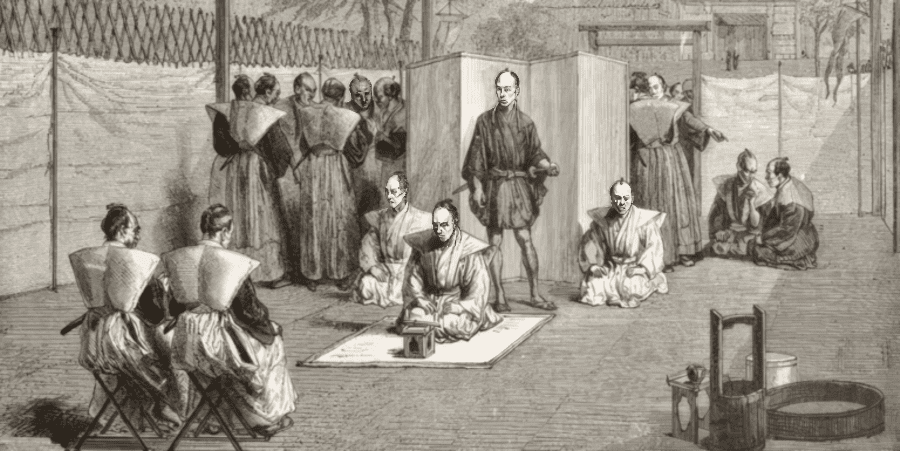
By the late 1500s, ‘kaishaku‘ became a term linked with seppuku, referring to the act of mercy killing by beheading to spare the individual from the agony of seppuku.
The person performing this task, a ‘kaishakunin‘, was a skilled swordsman and often a close associate, showing a deep bond and loyalty. This act was so sacred that the kaishakunin also had to commit seppuku, proving their devotion.
All these developments resulted in a nearly fully formed ritual of seppuku by the dawn of the Edo period, with all its associations of martial honor and poetic beauty.
The Formalised Ritual of Seppuku
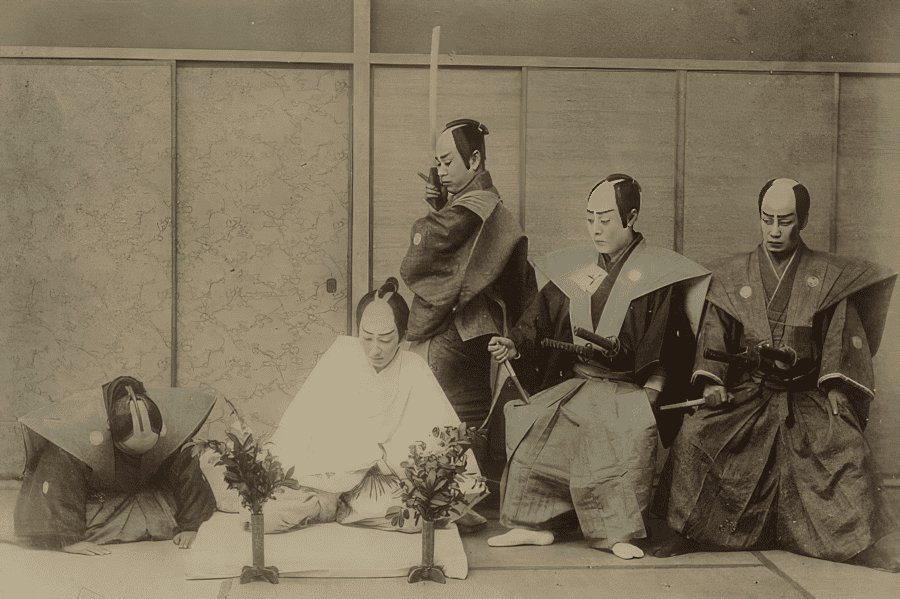
Starting in the 1500s, the practice of Seppuku became very formal. It involved detailed steps and rules.
The place was set up based on the samurai’s status, with mats and curtains arranged. Candles and incense were used to make the situation less upsetting for those watching.
A special kimono was worn, and either a knife (tanto) or a short sword (wakizashi) was used for the act. It was not allowed for the kaishakunin to use his own sword for this purpose.
They decided in advance the exact moment for the kaishakunin to act. This could be as soon as the samurai started to cut himself or when he reached for his blade, sometimes ending his life before he could complete the act.
This highlights how structured Seppuku had become. There were also different kinds of Seppuku, each with its own name.
| Types of Seppuku | Description |
|---|---|
| Ichimonji | A single horizontal cut across the belly |
| Jūmonji | A horizontal cut across the belly followed by a vertical cut in the shape of a cross |
| Hachimonji | Two vertical cuts across the belly |
| Sanmonji | Three horizontal cuts across the belly |
| Tachi-Bara | A stomach cut performed in a standing position |
| Oi-Bara | Suicide immediately after acting as kaishakunin for one’s lord or daimyo |
| Kanshi | Suicide committed in protest of another’s actions |
| Kage-Bara | A cut across the belly, which is then concealed and then revealed to others with dramatic effect, usually as a form of Kanshi or to prove a point |
Seppuku During the Edo period
In the peaceful Edo period, samurais had fewer chances to die honorably in battle or through seppuku. Yet, they still committed seppuku for honor, especially after their lord’s death, a practice called ‘junshi‘.
Seppuku was also a punishment for samurais who broke the law, like murder, theft, or fighting, to maintain their families’ honor.
Using seppuku for such offenses helped demilitarize society. Even drawing a sword in the palace was a severe disrespect, leading to forced seppuku, reflecting the shift from military to civil honor.
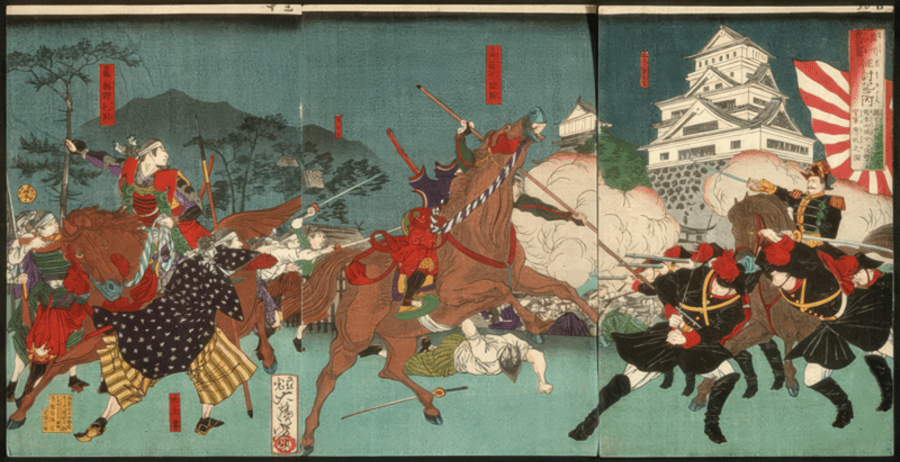
By the end of the Edo period, the 1877 Satsuma rebellion, led by Saigō Takamori, saw samurais fighting to restore their status against modern reforms.
Despite their defeat, Saigō and his men chose seppuku over capture, valuing samurai dignity.
Though Saigō might have died from a bullet, his followers beheaded him posthumously to preserve his honor, highlighting their enduring commitment to samurai values of honor and noble death.
Seppuku in Modern Japan
Seppuku, a traditional Japanese ritual, has persisted into modern times. Notably, after Emperor Meiji died in 1912, General Nogi Maresuke and his wife Shizuko performed seppuku as an act of loyalty (junshi).
During World War II, Japanese kamikaze pilots carried on seppuku traditions, including writing death poems and seeking an honorable death. After Japan’s defeat in 1945, many military officers also chose seppuku.
A famous recent case was Yukio Mishima, a writer and nationalist who, in 1970, tried to overthrow the Japanese government to restore samurai values. When his coup failed, Mishima and some followers committed seppuku, showing their dedication to his cause.
Seppuku has evolved from a defiant act to a ritual of honor, reflecting Japan’s enduring values of honor and tradition up to today.
